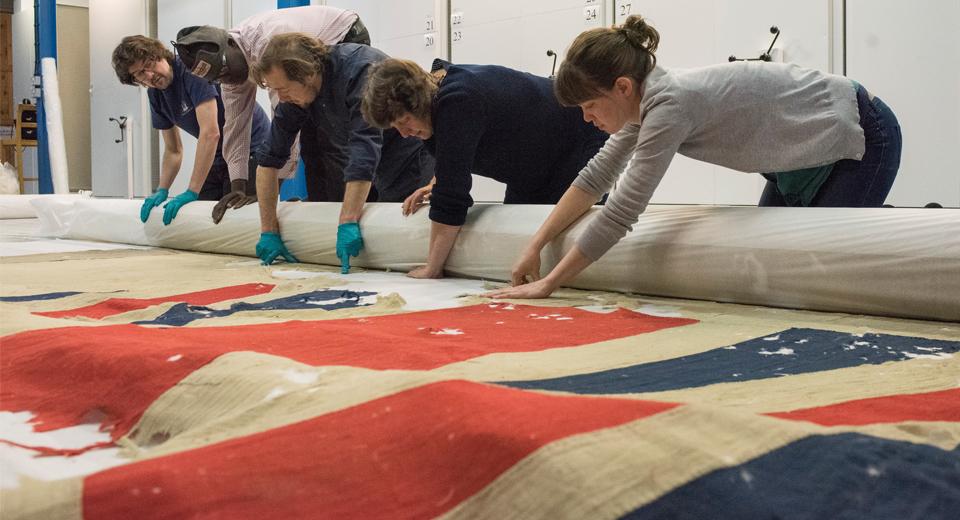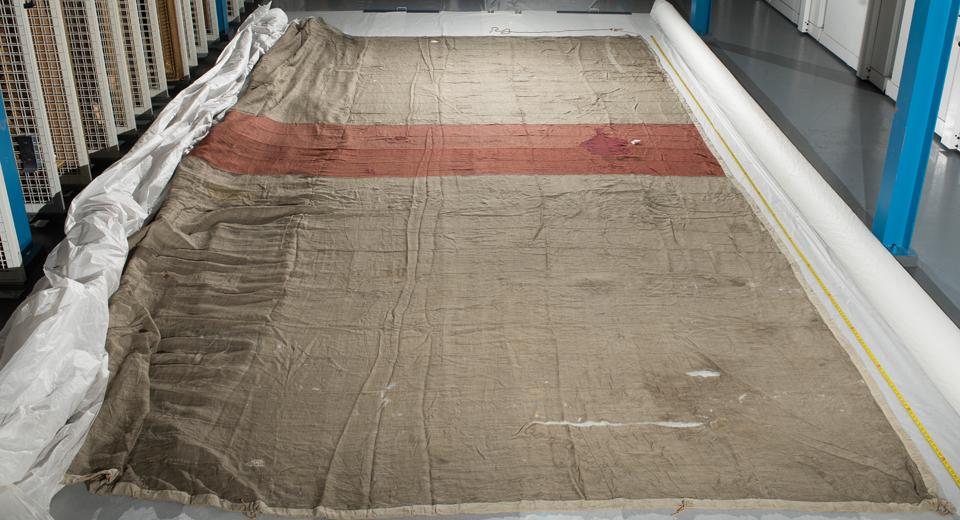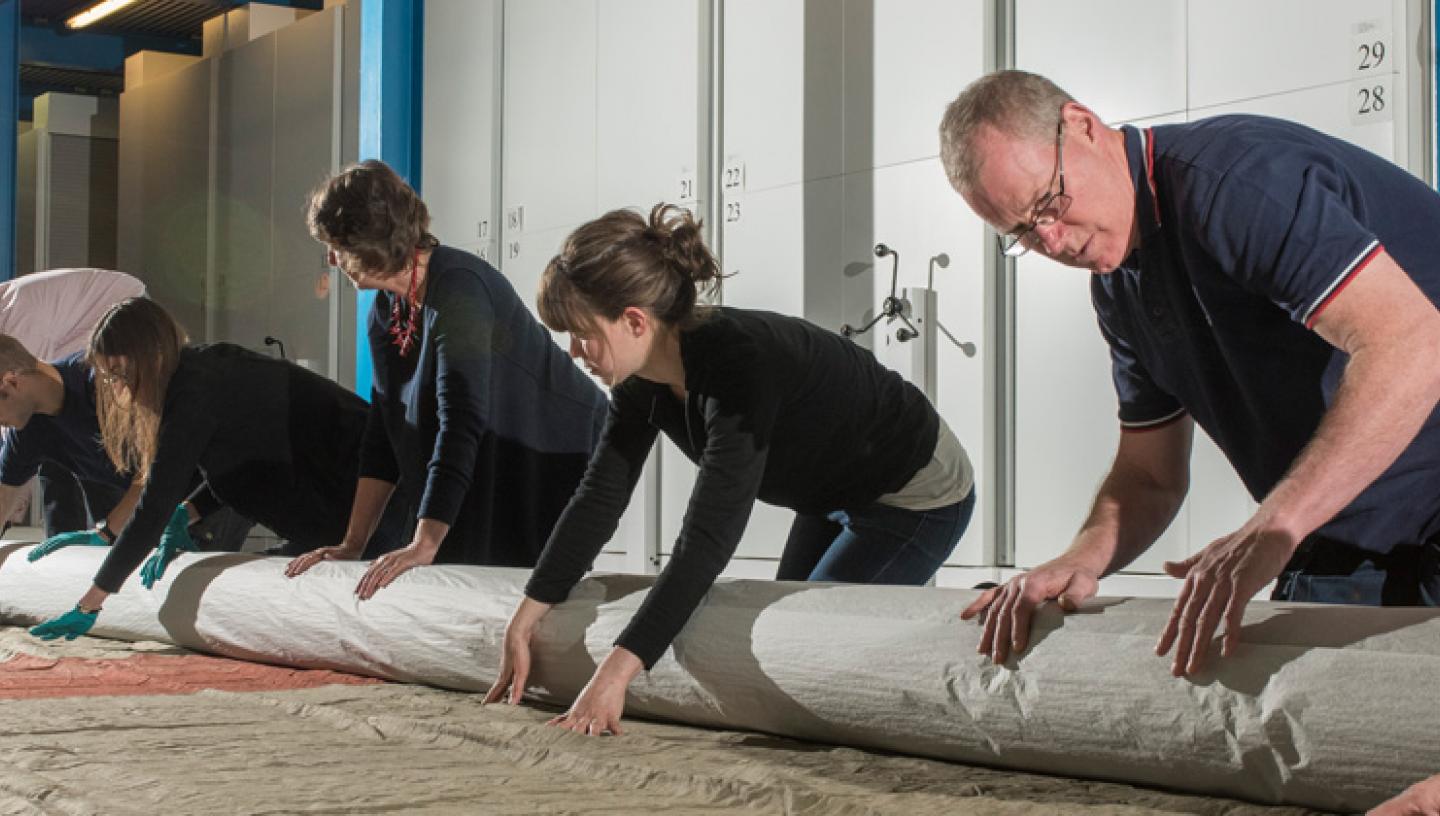
13 Jan 2016
Storing over 1,000 flags of all shapes and sizes is no easy job. Nora Meller and Sarah Kmosena take us through one nifty soultion, custom built for oversize textiles.
The Collections Management and Conservation Departments recently worked together to improve the storage for some of our oversize textiles. Working over four days, the Textile Conservators, Art and Object Handlers and Collection Store Manager rolled five flags and one tapestry.
There are over 1,100 flags in the National Maritime Museum’s textile collection. The majority of the flag collection (946 items) is stored rolled, while smaller flags are stored flat in drawers.
The five flags we rolled are diverse in origin and are some of the largest in the Museum’s collection, including the White Ensign (pattern before 1801) measuring approximately 6.5m x 12m (see it here).
We also rolled the largest tapestry in the collection, The Burning of the Royal James at the Battle of Solebay, 28 May 1672 (see it here).
Until now these large flags were stored folded in boxes, using tissue paper to pad out the folds. Due to the heavy weight of the textiles, over time the fold lines could potentially have turned into tears and the flags could have become even more fragmentary.
Even though the tapestry was already stored rolled, its roller was too short and narrow to comfortably accommodate it.
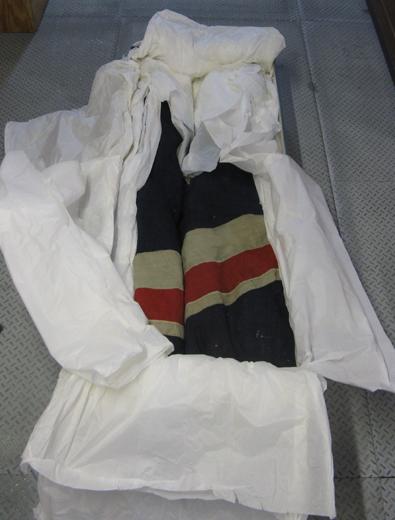
Rolling provides an even distribution of the weight of a textile. Ideally, the storage tube would be made of acid free material, however, we had difficulty sourcing 7 metre long acid free tubes. Therefore we covered cardboard tubes with Marvelseal®; an aluminised nylon and polyethylene barrier film.
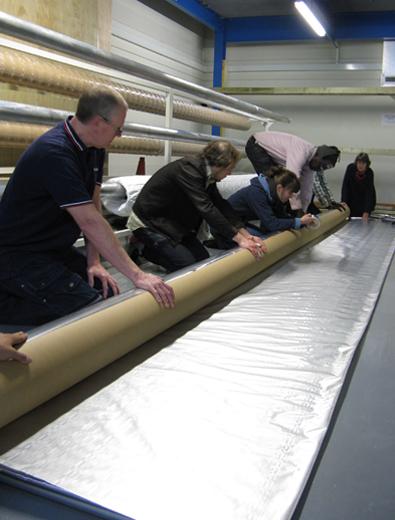
This was followed by a few layers of acid free tissue, which acted as further insulation and padding. More tissue paper was laid out on the floor and the flags were unfolded face-down, with their fly end (the end furthest from the flag pole) positioned next to the tube. The tapestry was also rolled face-down, which prevented the front side from becoming creased.
An additional benefit of laying out the textiles was that we could report on their condition, measure them accurately and take detailed photographs.
We rolled the textiles slowly and interleaved each layer with acid free tissue paper, ensuring that we smoothed out creases and realigned fragmented areas.
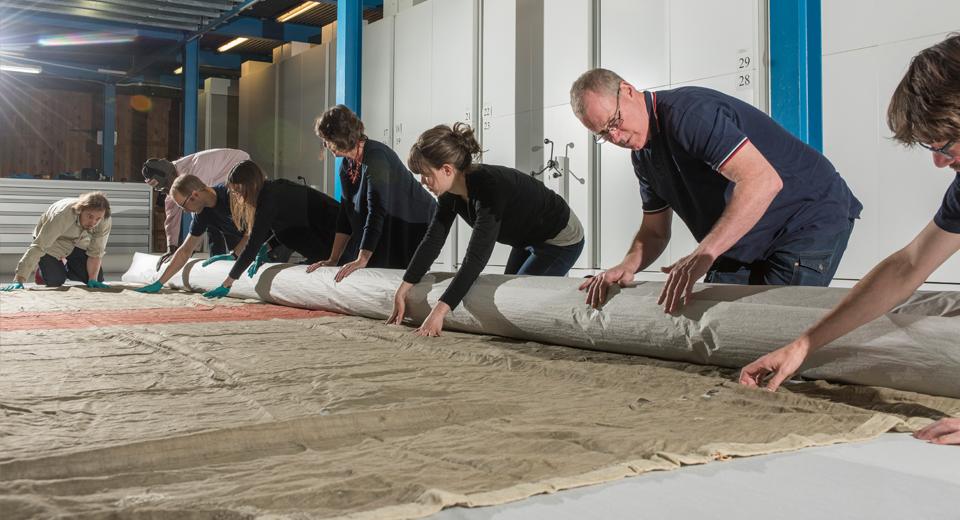
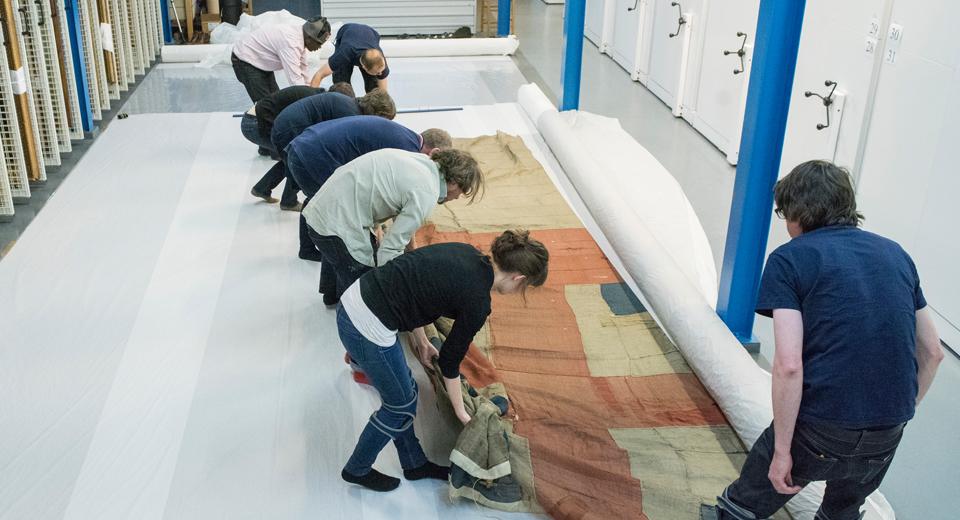
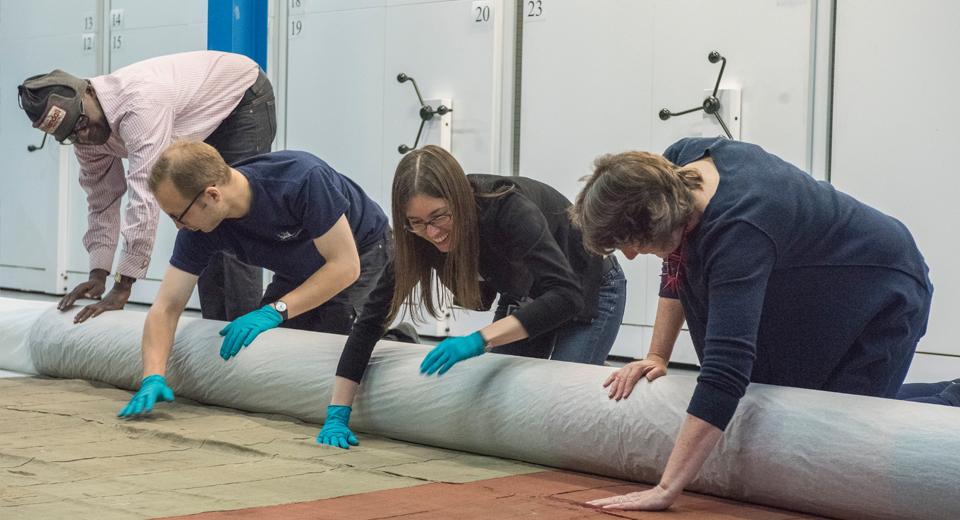
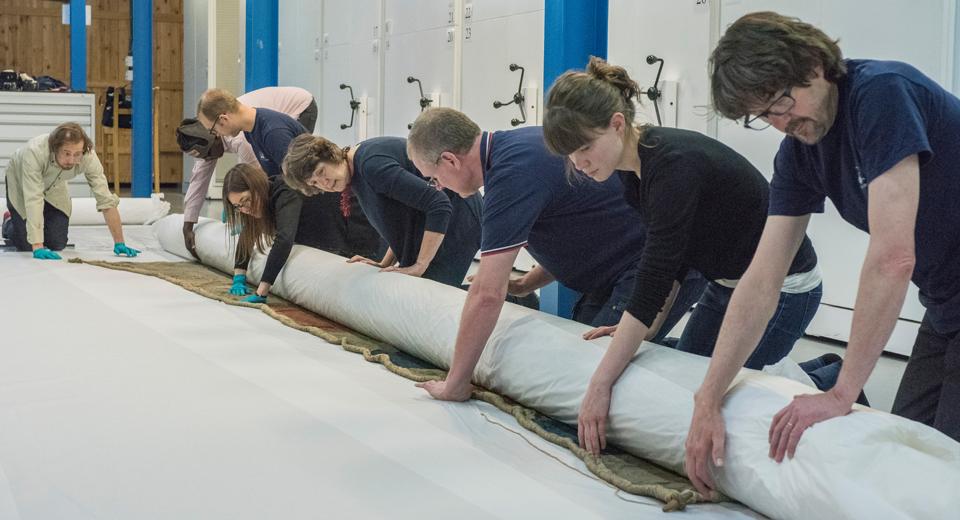
The rolled textiles were covered with a layer of Tyvek®; a non-woven polyethylene fabric that will protect them from dust. Every roller was provided with a label and a printed photograph to reduce the need for handling.
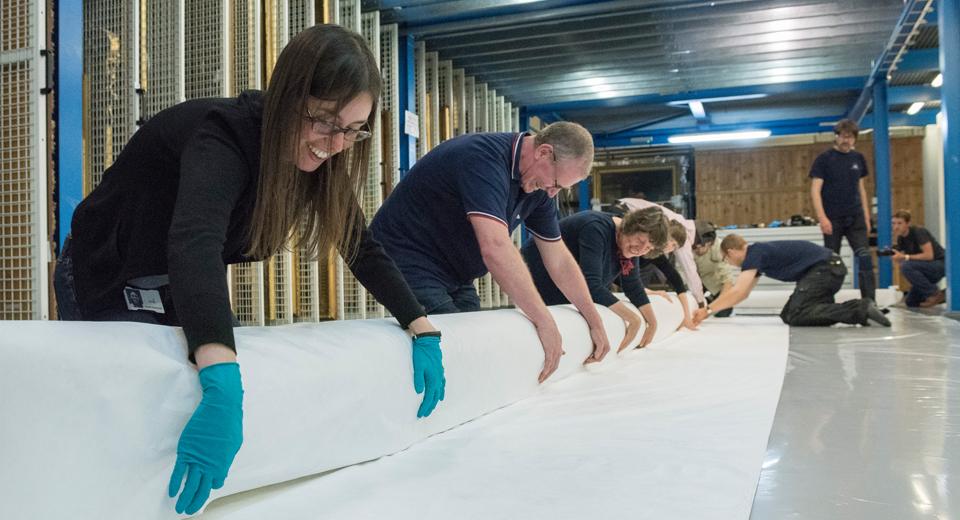
We designed a bespoke trolley with our racking supplier to hold the newly rolled textiles. The trolley holds rolls just over 7 metres in length. We used aluminium poles with a wide diameter to ensure minimal bowing of the rolls and also an acceptable weight for manual handling.
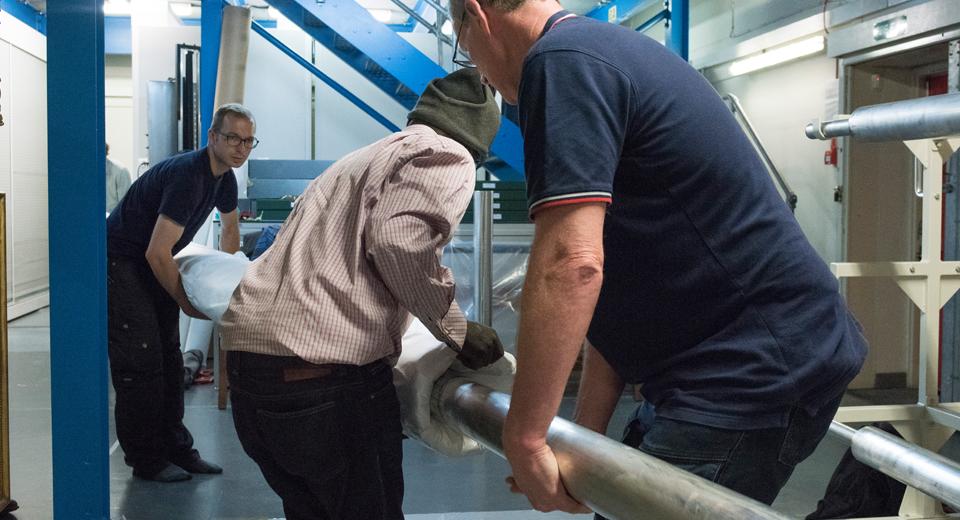
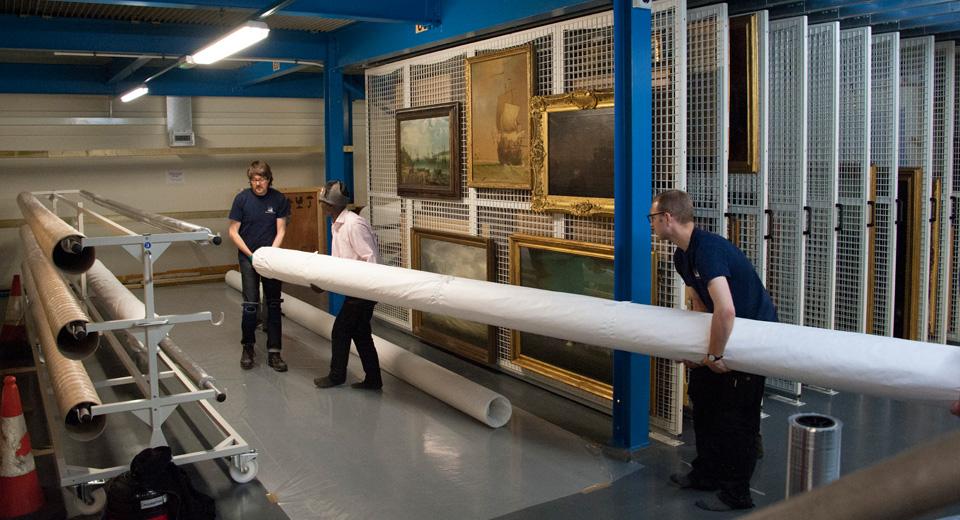
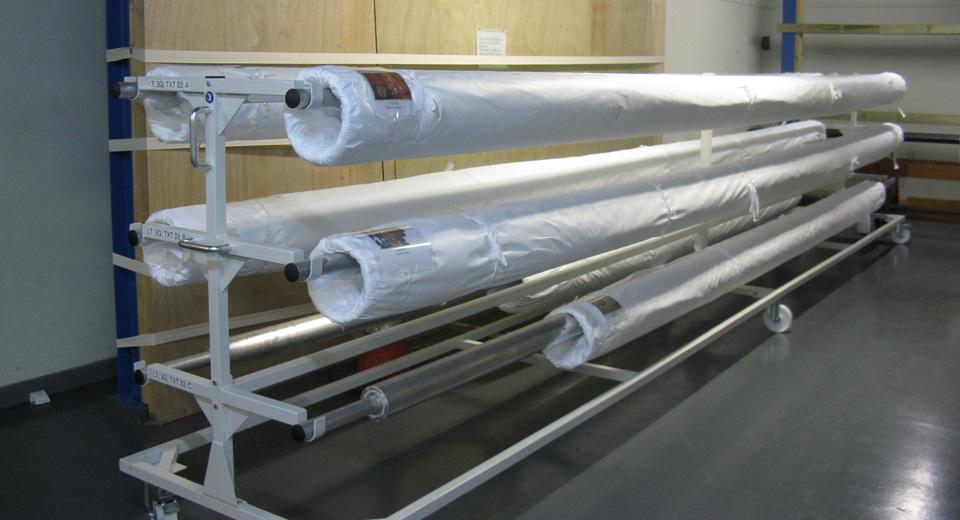
Each textile took us about 3 to 4 hours to complete. Even though the work was physically tiring at times, the team stayed focused and cheerful throughout. Kneeling for four straight days could have given us all very sore knees, however, we decided to wear very fashionable kneepads that saved the day (and our knees)!
For more information about the other flags we rolled please visit Collections Online:
Naval ensign of the Batavian Republic (1795-1806) - AAA0568
Royal Standard (1816-1837) - AAA0802
French naval ensign (1794-1814 and after 1830) - AAA0562
